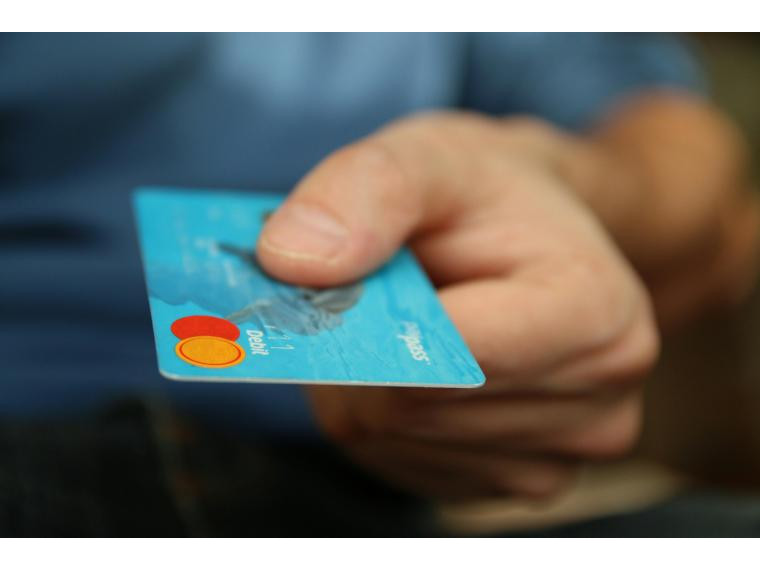Necessary documents for a cruise in Croatia
When making a list of what it is worth taking on a cruise, you should certainly start with the documents. In fact, they are the most important element you need to take care of. The lack of swimming trunks or sunglasses can still be supplemented on the spot, but omitting some element of documentation may completely destroy your dreams of sailing holidays.
So, what to take with you to Croatia? Here are our suggestions:
- something that will confirm your identity (ID card or passport),
- information on the embarkation base,
- sailing license (remember that to be able to drive a boat in Croatia, you must be at least a yacht helmsman),
- SRC certificate, i.e. radio operator's certificate (this function can be performed by the captain or a crew member),
- boarding pass, i.e. a document authorizing to take over the yacht from a representative of the shipowner,
- documents related to health - it can be a tourist insurance certificate (necessarily with contact to the insurance company) or an EHIC card (you can get it for free in Poland). If you are sailing with children, also take their health books,
- car documents (if you intend to drive to Croatia on your own): registration document, current insurance and vignettes (when you buy them in advance). If you are going to Dubrovnik, remember about the green card.
Currency
It is worth noting that the exchange of euros for kuna in Croatia in 2021 has made the payment of fees much easier. Now you don't have to wonder whether to exchange cash for local currency, how much, and what to do with the money you won't spend during the cruise.
You can simply buy euros in an exchange office in Poland, and leave any excess cash for another trip. However, remember that regardless of this, you may also need electronic payments or the possibility of blocking funds (this applies, for example, to insurance for a deposit for a yacht, an engine for a dinghy, WiFi, etc.).
If there's anything worth taking to Croatia , it's certainly a multi-currency card (Revolut). An alternative solution is to open a foreign currency sub-account (some banks, e.g. PKO, offer such a possibility - thanks to this you pay abroad with a card just like in Poland, but the funds are debited from a foreign currency account to which you previously paid euros bought, e.g. in an exchange office).
What to pack for a cruise?
As important as what to take to Croatia is the issue of choosing the right luggage . There is little space on the boat, and most lockers and lockers are far from cube-shaped. This means that you can't pack in a rigid suitcase or backpack with a frame, because there is a fear that they simply won't fit anywhere. In practice, a traditional sailing bag or a soft, foldable bag - e.g. the one you carry for training - works best. You can buy it for little money even in a hypermarket.
Also, remember that less is more: when choosing clothes for a yacht, focus on comfort rather than quantity . Most sailors wear the same clothes throughout the voyage anyway, so you're sure to follow the trend. What's more, good weather means that a quick-washed T-shirt is dry and ready to wear after an hour. So don't take too many things with you - because you'll probably never wear most of them.
Cruise in Croatia - a list of things to take
OK, documents completed, bag ready. It remains now to complete its equipment. So what to take on holiday to Croatia ? Here is our list:
- thin clothing: shorts, T-shirts, underwear,
- a bathing suit and a pareo shawl (useful to protect your shoulders or for the beach),
- thicker clothing (evenings and nights can be cool): a fleece sweatshirt plus long comfortable trousers,
- things for rain: storm jacket or rain clothes,
- sunglasses and a cap (both of these can be secured with a thin rope so that they do not fall into the water),
- shoes: sneakers with a soft, light sole, sports sandals, rubber water shoes (remember about sharp rocks and sea urchins),
- cream with a high filter,
- diving equipment or at least goggles and a snorkel,
- beach toys for children (sleeves, inflatables),
- GoPro camera/camcorder,
- chargers for all the electronics you take
- multiplier (there are always less sockets than those in need),
- rechargeable batteries,
- first aid kit with equipment (plasters, bandage, disinfectant, medicines for basic ailments - coal or smecta, paracetamol, aspirin, etc.) Also remember about the specifics that you take permanently,
- so-called time killers - cards, board games, books (preferably in an e-reader), crosswords.
Yacht shopping
You may be wondering what to take to Croatia to eat. If there are things you really can't do without (e.g. your favorite type of coffee, some iconic spice), you can bring them from Poland. The same applies if you have special dietary needs (gluten, dairy, sugar, etc.). In such a situation, it is better to stock up on the necessary products at home and not bother with the issue of provisions during the holidays.
However, if none of the options listed here apply to you, it is best to shop locally, especially if you are starting your cruise in a big city. Prices in supermarkets in Poland and Croatia are similar, so you don't have to worry about additional costs. Of course, on the islands or in small shops it can be a bit more expensive - planning your supplies wisely, however, you can avoid overpaying. It is also worth remembering that the cruise is a great opportunity to try local specialties; if you can, try to do some shopping at the market at least once – you can buy fish and seafood there, but also olive oil, liquors or vegetables. Certainly their taste will be different than products from the store.
Necessary documents for a cruise in Croatia
When making a list of what it is worth taking on a cruise, you should certainly start with the documents. In fact, they are the most important element you need to take care of. The lack of swimming trunks or sunglasses can still be supplemented on the spot, but omitting some element of documentation may completely destroy your dreams of sailing holidays.
So, what to take with you to Croatia? Here are our suggestions:
- something that will confirm your identity (ID card or passport),
- information on the embarkation base,
- sailing license (remember that to be able to drive a boat in Croatia, you must be at least a yacht helmsman),
- SRC certificate, i.e. radio operator's certificate (this function can be performed by the captain or a crew member),
- boarding pass, i.e. a document authorizing to take over the yacht from a representative of the shipowner,
- documents related to health - it can be a tourist insurance certificate (necessarily with contact to the insurance company) or an EHIC card (you can get it for free in Poland). If you are sailing with children, also take their health books,
- car documents (if you intend to drive to Croatia on your own): registration document, current insurance and vignettes (when you buy them in advance). If you are going to Dubrovnik, remember about the green card.
Currency
It is worth noting that the exchange of euros for kuna in Croatia in 2021 has made the payment of fees much easier. Now you don't have to wonder whether to exchange cash for local currency, how much, and what to do with the money you won't spend during the cruise.
You can simply buy euros in an exchange office in Poland, and leave any excess cash for another trip. However, remember that regardless of this, you may also need electronic payments or the possibility of blocking funds (this applies, for example, to insurance for a deposit for a yacht, an engine for a dinghy, WiFi, etc.).
If there's anything worth taking to Croatia, it's definitely a multi-currency card (Revolut). An alternative solution is to open a foreign currency sub-account (some banks, e.g. PKO, offer such a possibility - thanks to this you pay abroad with a card just like in Poland, but the funds are debited from a foreign currency account to which you previously paid euros bought, e.g. in an exchange office).
What to pack for a cruise?
Equally important as what to take to Croatia is the issue of choosing the right luggage. There is little space on the boat, and most lockers and lockers are far from cube-shaped. This means that you can't pack in a rigid suitcase or backpack with a frame, because there is a fear that they simply won't fit anywhere. In practice, a traditional sailing bag or a soft, foldable bag - e.g. the one you carry for training - works best. You can buy it for little money even in a hypermarket.
Also remember that less is more: when choosing clothes for a yacht, focus on comfort rather than quantity. Most sailors wear the same clothes throughout the voyage anyway, so you're sure to follow the trend. What's more, good weather means that a quick-washed T-shirt is dry and ready to wear after an hour. So don't take too many things with you - because you'll probably never wear most of them.
Cruise in Croatia - a list of things to take
OK, documents completed, bag ready. It remains now to complete its equipment. So what to take on holiday to Croatia? Here is our list:
- thin clothing: shorts, T-shirts, underwear,
- a bathing suit and a pareo shawl (useful to protect your shoulders or for the beach),
- thicker clothing (evenings and nights can be cool): a fleece sweatshirt plus long comfortable trousers,
- things for rain: storm jacket or rain clothes,
- sunglasses and a cap (both of these can be secured with a thin rope so that they do not fall into the water),
- shoes: sneakers with a soft, light sole, sports sandals, rubber water shoes (remember about sharp rocks and sea urchins),
- cream with a high filter,
- diving equipment or at least goggles and a snorkel,
- beach toys for children (sleeves, inflatables),
- GoPro camera/camcorder,
- chargers for all the electronics you take
- multiplier (there are always less sockets than those in need),
- rechargeable batteries,
- first aid kit with equipment (plasters, bandage, disinfectant, medicines for basic ailments - coal or smecta, paracetamol, aspirin, etc.) Also remember about the specifics that you take permanently,
- so-called time killers - cards, board games, books (preferably in an e-reader), crosswords.
Yacht shopping
You may be wondering what to take to Croatia to eat. If there are things you really can't do without (e.g. your favorite type of coffee, some iconic spice), you can bring them from Poland. The same applies if you have special dietary needs (gluten, dairy, sugar, etc.). In such a situation, it is better to stock up on the necessary products at home and not bother with the issue of provisions during the holidays.
However, if none of the options listed here apply to you, it is best to shop locally, especially if you are starting your cruise in a big city. Prices in supermarkets in Poland and Croatia are similar, so you don't have to worry about additional costs. Of course, on the islands or in small shops it can be a bit more expensive - planning your supplies wisely, however, you can avoid overpaying. It is also worth remembering that the cruise is a great opportunity to try local specialties; if you can, try to do some shopping at the market at least once – you can buy fish and seafood there, but also olive oil, liquors or vegetables. Certainly their taste will be different than products from the store.
Do you want to rent a yacht in Croatia? See our offers:
charternavigator.pl/yacht-charters-croatia,2,localization.html

 Wondering what to take sailing to Croatia? Do you want to be sure that your equipment will contain everything you will need during the cruise? Then be sure to read the text below. In it you will find practical tips that will help you complete the necessary equipment.
Wondering what to take sailing to Croatia? Do you want to be sure that your equipment will contain everything you will need during the cruise? Then be sure to read the text below. In it you will find practical tips that will help you complete the necessary equipment.











